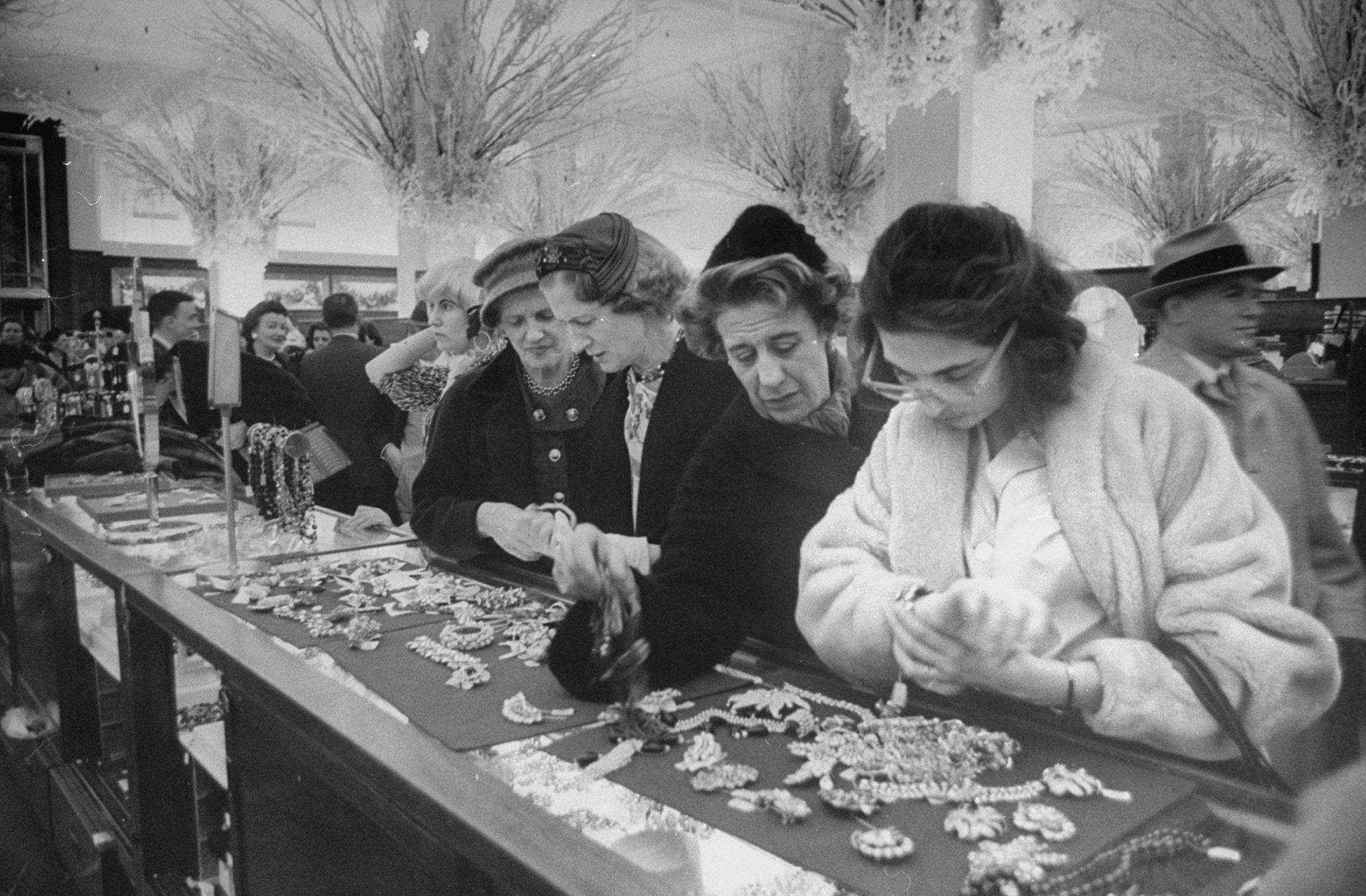Before the nationwide influx of suburban malls and the convenience of online shopping, there was a golden age of American department stores. More than merely local shopping hubs, these ostentatious emporiums offered tea rooms, child care, beauty services, and exotic animals for sale, if you could afford a pet monkey or a baby puma.
Though the buildings belonged to billionaire men, it was women who strategized and oversaw the commercial and cultural success of some of the biggest and best department stores in America: Hortense Odlum at Bonwit Teller, Dorothy Shaver at Lord & Taylor, and Geraldine Stutz at Henri Bendel among them. This trio is among the subjects of Julie Satow’s new book, “When Women Ran Fifth Avenue: Glamour and Power at the Dawn of American Fashion.”
As Satow illustrates, department stores were places where women gathered, gossiped, and dreamed of more luxurious lives. In Europe, there was Harrods (or Liberty) in London and Le Bon Marche Rive Gauche in Paris — stores that had established the culture of shopping as an event, buzzing with a life of their own. From the Depression era through to the swinging Sixties in New York, Odlum, Shaver and Stutz built their domains into similar fashion and cultural destinations. Satow knits their stories together to explore how the evolution of department stores reflected the changing values of women as business leaders, how closely our identities are tied to where we shop (and what we buy), and how the role of humans is integral to the experience of shopping — or, perhaps, any service industry threatened by automatization.
“When department stores originally opened, (they represented) one of the rare opportunities for women to congregate together in public,” Satow told CNN. “It was almost a fantasy world, and a place for women to come together for advice and a sense of community. Shopping was a sentient, sensual experience.”
Even for those on the other side of the counter, it was momentous: Employment gave many women their first taste of independence, and aspirations to careers in retail, fashion, and hospitality. And the stores also offered something much greater to the women Satow profiles. In a period in which it was nearly impossible for women to pursue business leadership, independently or at all, Odlum, Shaver, and Stutz were largely unsung pioneers.
“None of these women have biographies,” Satow noted. “Dorothy Shaver paved the way for many other women who rose through the ranks in the retail industry. She broke so many ceilings in terms of women at work… In 1947, she was named ‘the No. 1 career woman’ in TIME magazine, which was a rarity.”
That year, Shaver was overseeing a $40 million business, and by the time she died in 1959 — still president of Lord & Taylor to the end — annual sales had reached $100 million. Shaver was also a founding member of the organization of women within the American fashion industry, Fashion Group (now known as the Fashion Group International) alongside Elizabeth Arden and Helena Rubinstein in 1930, and the architect of the “American Look,” which in the 1940s transformed the national fashion industry and instilled a sense of pride in less restrictive, affordable American clothing, the forerunner of modern sportswear. Until that point, American women had become accustomed to buying European fashion or cheaper, locally produced copies of what appeared on Parisian runways.
“Women running department stores (had) an innate understanding that men lacked,” Satow explained. “Hortense Odlum was very much trying to make the department store a welcoming place… She saw herself as a hostess, in a way.”
(Odlum’s perspective was, in large part, driven by her own experiences; until her husband’s law career flourished with the couple’s move to New York, she had been all-too-budgeted in her fashion choices and all-too-conscious of clothes as a status symbol. Her motivation was to make department stores enticing — and accessible — for women of all means.)
And Geraldine Stutz, who transitioned into the retail business after roles in fashion media, implemented concepts still relevant to the industry today. Henri Bendel recruited her in 1964 as a last-ditch attempt to save their store from bankruptcy — there, “she originated the boutique experience that we still see today, including the divisions of brands within a store,” Satow said. Within three years, Stutz had doubled sales; she was elected to the Fashion Industry Hall of Fame in 1985.
“All three women created a special atmosphere and ambiance within their stores. Today, shopping is not nearly as immersive and experiential as it was,” Satow explained.
“I think there is a nostalgia for the golden era of the department store, and it is always bittersweet when an era like that ends,” she continued. “Now, with everything from Etsy to TikTok, nearly anyone with (the) will and a small budget can start their brand. The opportunities department stores afforded women are less critical than they once were.”
This novel is set within the fictional F.G. Goode department store in 1950s Sydney, Australia. The titular women in black are the saleswomen, whose personal and professional dramas intersect as they weather the politics of the womenswear department. Considered an Australian classic, the book has been translated onto the big screen and stage.
In this quintessentially ‘80s cult classic, Kim Cattrall plays, wait for it, a mannequin seemingly dreamed into life by jack-of-all-trades Jonathan Switcher (Andrew McCarthy). The pair build a partnership, both professionally — staging attention-grabbing window displays at a failing department store — and romantically. The catch to this love story: Emmy only comes to life for Jonathan. Is it ridiculous and campy? Of course, but Hollywood Montrose would have it no other way.
A bestseller in Korea, the debut novel (and first of a two-book series) from author Miye Lee weaves a fantastical narrative around, as its title suggests, a department store selling consumers’ perfect dreams. Instead of traditional store floors and sections like womenswear or home furnishings, shoppers can browse well-curated dream worlds — nostalgia, travel, fantasy, and even nightmare — to find the perfect fit for their slumber; promoting the value of bedtime as any good sleep salesman would, the book also highlights the importance of quality shut-eye on the subconscious.
It was common practice in department stores of the 1930s and 40s to employ undercover shoppers and in-store detectives to keep an eye on both customers and employees, identifying union organizers in particular — as American workers today are increasingly looking to unions to combat stagnant wages and layoffs, the 1941 film “The Devil and Miss Jones” feels remarkably prescient. Its plot sees John P. Merrick (Charles Coburn) as the New York retail tycoon who pretends to be a shoe clerk at one of his stores where he suspects his workers are attempting to form a union, opposite Mary Jones (Jean Arthur) as the captivating salesgirl who somehow wins her boss over to sympathize with their cause.
This brilliantly rendered biography of beauty industry pioneers Helena Rubinstein and Elizabeth Arden paints a picture of two women who single-mindedly forged internationally renowned beauty businesses — while engaged in extraordinary rivalry. Alternating chapters are dedicated to each woman as she determinedly sets out to one-up her industry foe.


